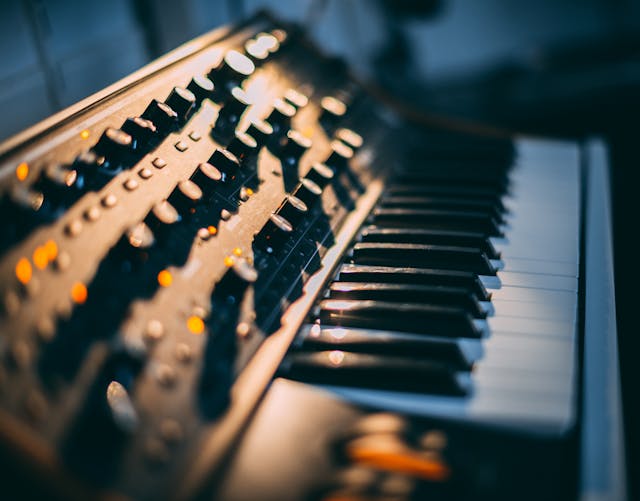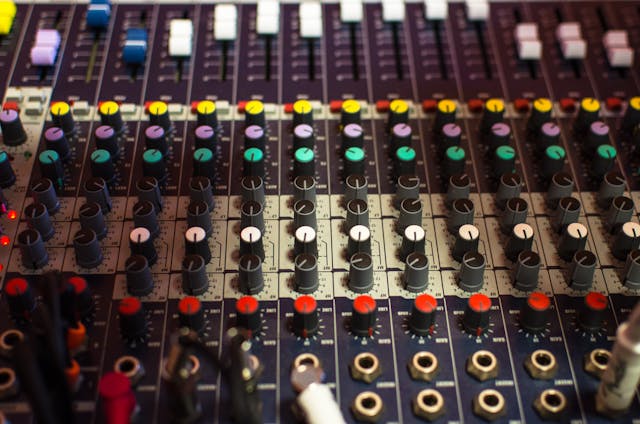DIY Music Production: Creative Approaches to Making Music on a Budget
In today’s digital age, producing music no longer requires expensive studio time or professional equipment. With the right tools and creativity, anyone can produce high-quality music from the comfort of their own home. Whether you’re a budding musician or an aspiring producer, making music on a budget is not only possible, but it can also be an incredibly rewarding experience. In this article, we’ll explore some creative and affordable approaches to DIY music production, helping you get started without breaking the bank.

Getting Started: The Essentials You Need
Before diving into music production, it’s important to understand the basic tools you need. While professional studios use top-of-the-line equipment, you can still create amazing music with just a few essential items.
1. Computer or Laptop
At the core of any home music production setup is a computer. You don’t need the latest, most expensive model; a basic laptop or desktop with decent processing power should be enough for most DIY producers. Make sure your computer meets the system requirements for your chosen music production software.
2. Digital Audio Workstation (DAW)
A DAW is the software used to create, record, and edit music. Some popular, budget-friendly options include:
-
GarageBand (for Mac users): Free and easy to use, GarageBand is a great starting point for beginners.
-
Ableton Live Intro: A stripped-down version of the popular Ableton software, this option is affordable and packed with features for creative production.
-
FL Studio Fruity Edition: Known for its user-friendly interface, this software is great for electronic music producers and is budget-friendly.
3. Audio Interface
An audio interface allows you to connect microphones, instruments, and other equipment to your computer for recording. While high-end interfaces can be pricey, there are many affordable options that still deliver great sound quality. Popular budget-friendly choices include:
-
Focusrite Scarlett Solo: A simple, affordable interface with excellent sound quality.
-
Behringer UMC22: A low-cost alternative that still provides good performance for home producers.
4. Headphones or Speakers
Good headphones or speakers are crucial for accurate mixing and production. If you’re on a tight budget, consider investing in decent studio headphones like:
-
Audio-Technica ATH-M50X: A reliable pair of headphones that offer clear, balanced sound without breaking the bank.
-
AKG K240: A more affordable option that still delivers great sound for mixing and production.
Creative Ways to Produce Music on a Budget
Now that you have the essential gear, let’s explore some creative ways to make music without spending a lot of money.
1. Use Free or Affordable VST Plugins
Virtual Studio Technology (VST) plugins are software instruments and effects that can enhance your music production. There are many free or low-cost VSTs available that sound professional and can add depth to your tracks. Some popular free plugins include:
-
Spitfire Audio LABS: A collection of free, high-quality instruments ranging from strings to percussion.
-
TAL-Noisemaker: A powerful and free synthesizer plugin that can create a wide range of sounds.
-
Ample Sound: Offers free versions of their guitar and bass plugins, which are great for adding realistic string instruments.
If you’re willing to spend a little more, affordable VST packs like Arturia’s Analog Lab or Native Instruments’ Kontakt Player provide a vast range of sounds for an affordable price.
2. Record Using a Smartphone
You don’t need a fancy microphone or expensive recording equipment to capture ideas. Many successful producers have started by recording their ideas using their smartphones. Apps like GarageBand for iPhone or BandLab for Android offer powerful recording tools that let you capture ideas quickly and easily.
Additionally, you can use your smartphone as an instrument, with apps that simulate piano, drums, or other instruments. Some examples include Korg Kaossilator or Roland’s Zenbeats.
3. Layer Sound Samples
Instead of spending money on expensive software instruments, consider using free or affordable sound samples. There are tons of websites that offer royalty-free sound libraries, including:
-
Freesound.org: A treasure trove of sound effects, field recordings, and music loops available for free download.
-
Looperman: A community-driven site offering thousands of free loops and samples to use in your music.
-
Splice: A subscription service that provides access to an enormous library of professional-quality samples for a small monthly fee.
Layering different sound samples—such as percussion, ambient sounds, and instrumental loops—can help you create complex tracks without needing to buy expensive instruments.
4. Experiment with MIDI
MIDI (Musical Instrument Digital Interface) allows you to control virtual instruments with a keyboard or MIDI controller. While professional MIDI controllers can be pricey, there are affordable options that still provide great functionality, such as:
-
Akai MPK Mini: A compact and budget-friendly MIDI controller perfect for beginners.
-
Arturia Keystep: A slightly more expensive but highly versatile option with a built-in sequencer.
If you don’t have a MIDI controller, many DAWs offer built-in virtual keyboards or you can even use a standard computer keyboard to control MIDI instruments.

5. Collaborate with Others
Collaboration doesn’t always require meeting in person or spending money. Many producers collaborate online by sharing project files, sound samples, or ideas. Platforms like SoundCloud, BandLab, and Kompoz make it easy to connect with other musicians and producers, allowing you to create music together without the need for expensive equipment or studio space.
Tips for Maximizing Your DIY Music Production
-
Focus on the Basics: You don’t need a vast array of instruments or effects to create great music. Start by mastering your DAW and building your skills with the essentials.
-
Practice Regularly: The more you practice, the better you’ll become. Take time to experiment with different genres and sounds to develop your style.
-
Mix and Master Efficiently: While you may not have access to professional mixing tools, learning to mix and master your tracks at home can save you money. Plenty of free tutorials and guides online can help you improve your mixing skills.
Conclusion: Embrace Your Creativity
DIY music production on a budget is not only possible—it’s an exciting and creative journey that allows you to express yourself through sound. With the right tools, a little ingenuity, and a lot of practice, you can produce high-quality music without spending a fortune. Whether you’re using free software, experimenting with sound samples, or recording with your smartphone, the key is to embrace your creativity and keep pushing forward. Remember, great music doesn’t always come from expensive gear—it comes from passion, dedication, and a willingness to experiment. So, start making music today and let your creativity shine!












